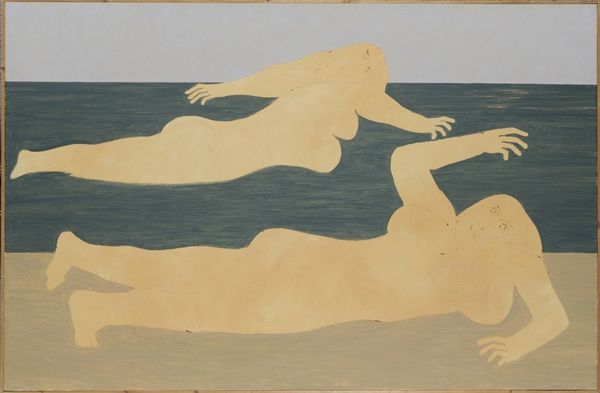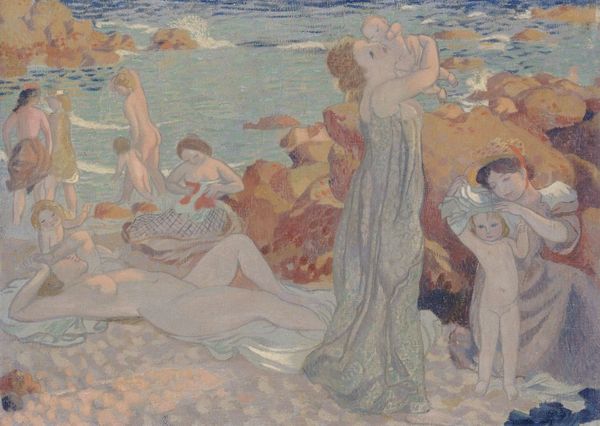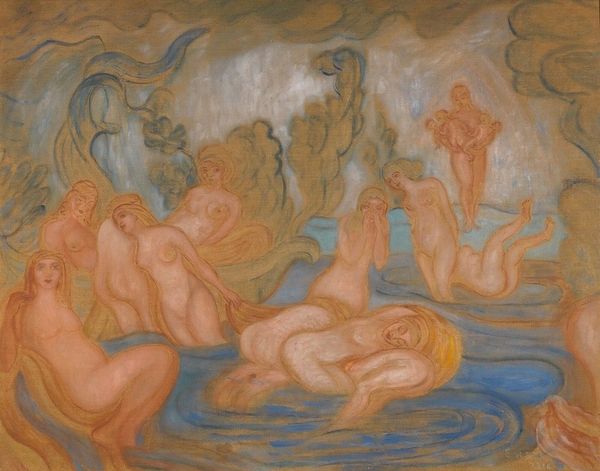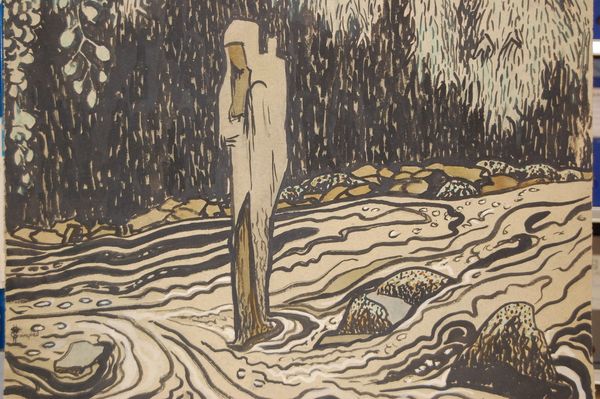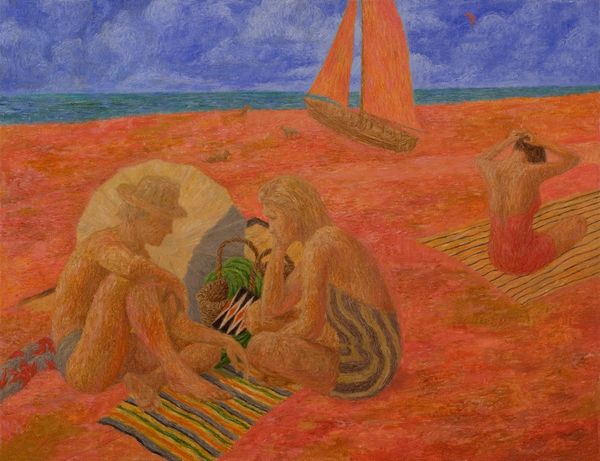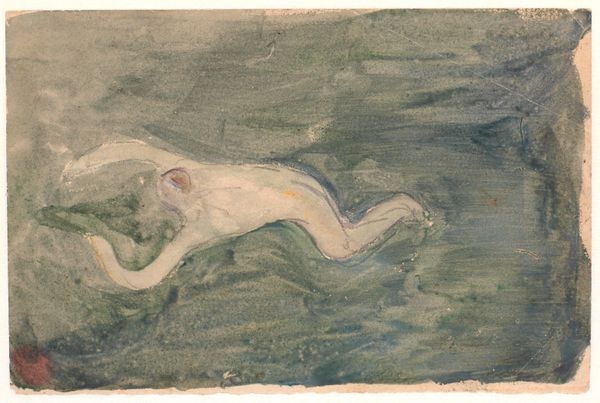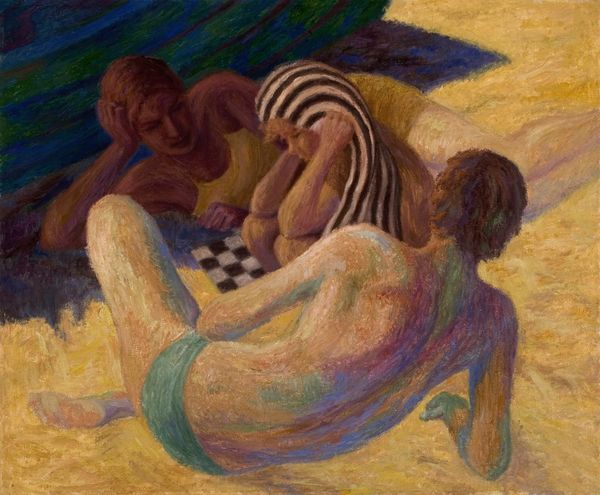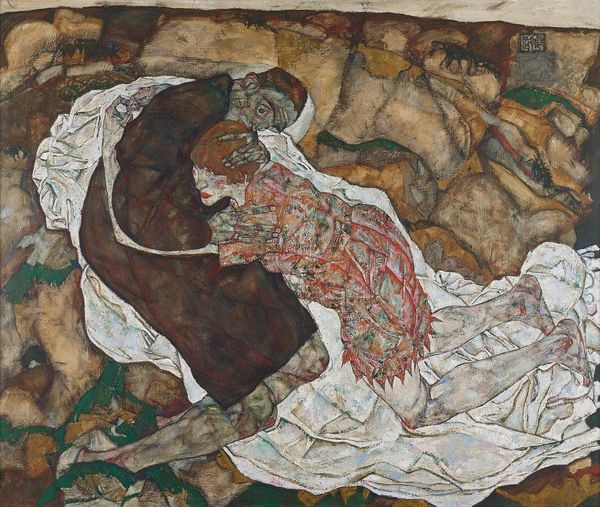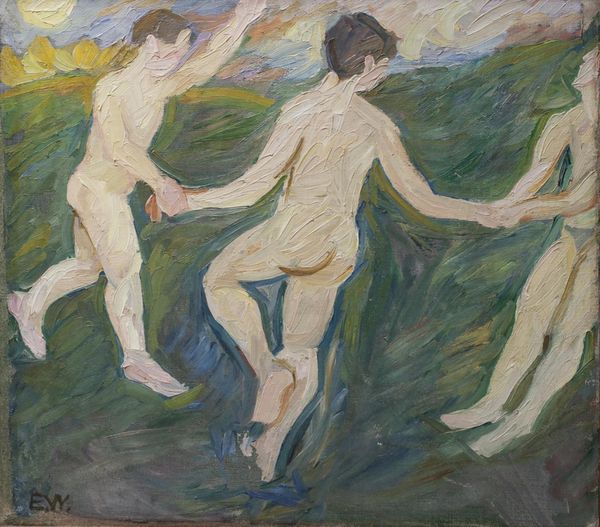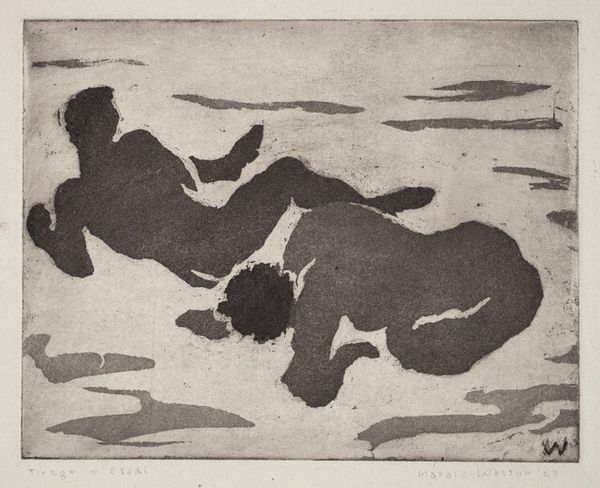
Dimensions: support: 2286 x 3061 mm
Copyright: © Tate | CC-BY-NC-ND 4.0 DEED, Photo: Tate
Editor: This is "Bathing" by Duncan Grant, a very large painting at Tate Britain. The figures seem to blend into the waves, almost as if they're becoming one with the sea. How do you interpret this depiction, especially considering its public display? Curator: Grant’s work appeared during a time of increasing openness regarding sexuality, influencing public perceptions. This mural-sized painting celebrates the male form in a pre-war, almost utopian setting. Does the composition, with its integration of figures and landscape, suggest a broader statement about society and nature? Editor: It does feel very integrated, like there's no separation between the human figures and the natural world. Curator: Exactly, and that integration challenges traditional hierarchies in art, inviting viewers to reconsider their relationship with both the body and the environment. Editor: That makes me see it in a completely new light. Thanks! Curator: My pleasure!
Comments
Join the conversation
Join millions of artists and users on Artera today and experience the ultimate creative platform.
tatebritain 8 months ago
⋮
This was painted in the summer of 1911 as part of a decorative scheme for the dining room at the Borough Polytechnic, London. The theme was ‘London on Holiday’, and Grant responded by painting this idealised panorama of seven male nudes bathing. The nudes also represented the continuous movement of a single figure. Grant’s design was inspired by Michelangelo’s male nudes and summers spent at the Serpentine in Hyde Park, which was a site associated with London’s gay culture. Bathing was seen as controversial at the time it was painted, due to its homoerotic implications. Gallery label, August 2019
